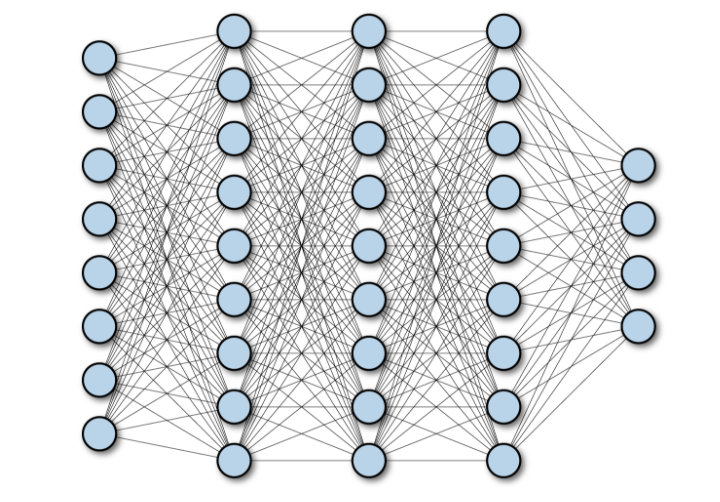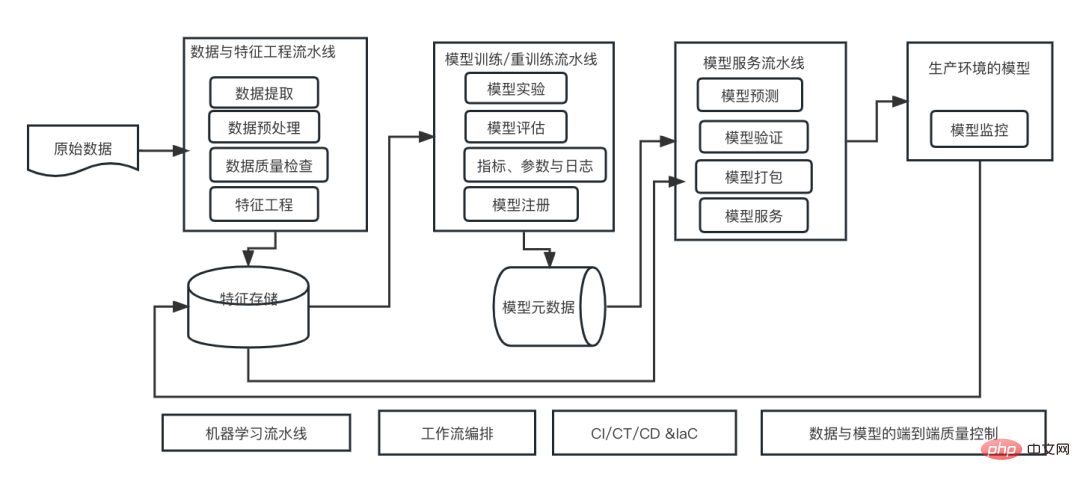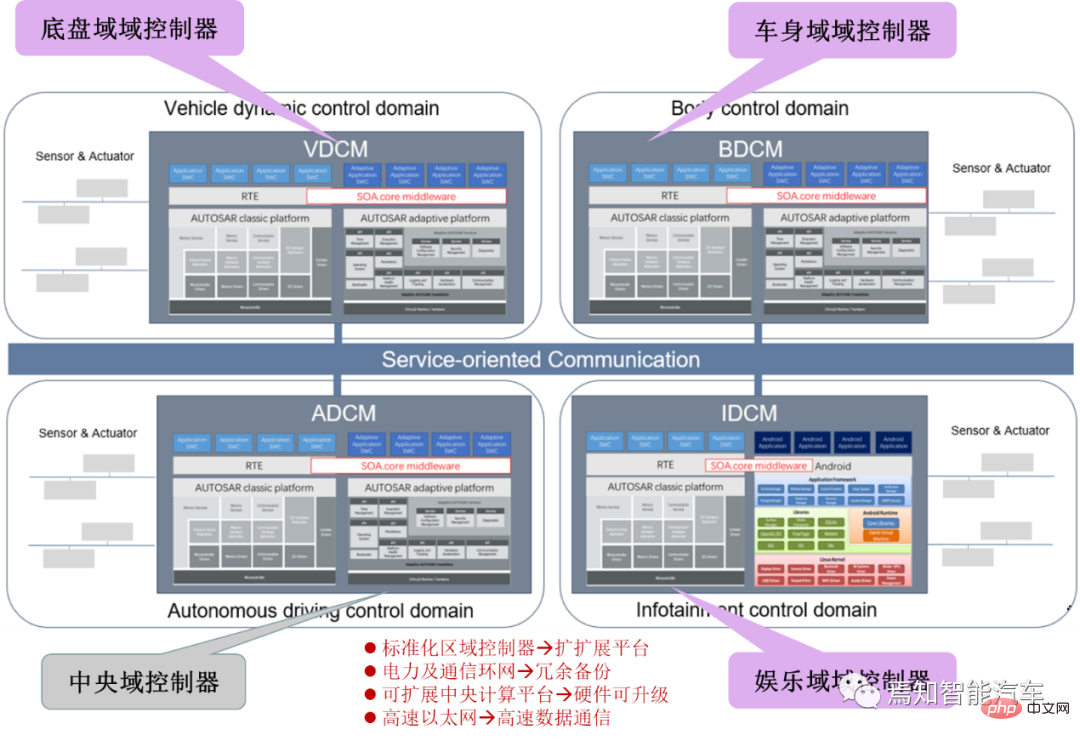 Backend Development
Backend Development PHP Tutorial
PHP Tutorial Master the techniques and concepts of developing microservice architecture in PHP
Master the techniques and concepts of developing microservice architecture in PHP
With the rapid development of the Internet and iterative updates of technology, microservice architecture has become a popular choice among developers. In the microservice architecture, PHP, as a popular back-end development language, is also constantly developing and growing. This article will lead readers to explore the technologies and concepts of developing microservice architecture in PHP.
- What is microservice architecture?
Microservice architecture is a method of building complex applications by splitting the application into multiple independent small services. Each microservice is responsible for a specific business function and can be independently developed, deployed, scaled and updated. Microservices communicate through clear interfaces and can be implemented using different programming languages and technologies. - Advantages of PHP in microservice architecture
As a popular back-end development language, PHP has the following advantages to support the development of microservice architecture: - A large developer community and rich ecosystems. PHP has an extensive developer community and a large number of open source projects, which can provide a wealth of tools and libraries to support the development of microservice architecture.
- Highly scalable. PHP can be expanded in various ways, such as using multi-threading, distributed computing and other technologies to meet applications of different sizes and needs.
- Flexible deployment method. PHP can use different deployment methods, such as Docker containers, cloud platforms, etc., to achieve rapid deployment and expansion of microservices.
- Technologies and concepts of PHP microservice development
When developing PHP microservices, you need to master the following technologies and concepts: - RESTful API design. Use RESTful architecture to design API interfaces, communicate through HTTP protocol, and realize data interaction between different microservices.
- Service registration and discovery. Use service registration and discovery tools, such as Consul, etcd, to manage and discover microservices.
- Message queue and asynchronous communication. Use message queues and asynchronous communication to achieve decoupling between microservices and higher performance.
- Database design and management. According to the needs of microservices, rationally design the database structure and use the ORM framework to manage database operations.
- Permissions and authentication. Use JWT, OAuth and other technologies to manage and verify permissions and identity authentication of microservices.
- Distributed tracking and monitoring. Use distributed tracing and monitoring tools, such as Zipkin, Jaeger, etc., to monitor and trace calls and performance between microservices.
- Practical Case: Using PHP to Develop Microservice Architecture
Taking the e-commerce platform as an example, we will introduce a practical case of using PHP to develop microservice architecture. The e-commerce platform can be split into multiple microservices such as user services, product services, and order services. - User service is responsible for user registration, login, information management and other functions.
- The product service is responsible for product management, search, details and other functions.
- The order service is responsible for the creation, payment, cancellation and other functions of orders.
These microservices can be developed, deployed, and scaled independently, communicating through RESTful APIs. You can use Consul as a service registration and discovery tool, use message queues to implement asynchronous communication, use the ORM framework to manage database operations, use JWT for permissions and authentication management, and use distributed tracking and monitoring tools to monitor and track calls and performance between microservices. .
- Summary
With the complexity of Internet applications and changes in business needs, microservice architecture has become a popular development method. By using PHP to develop a microservice architecture, applications can be better split, combined, and expanded. Mastering the technologies and concepts of PHP development microservice architecture is of great significance to improving development capabilities and adapting to market demand.
The above is the detailed content of Master the techniques and concepts of developing microservice architecture in PHP. For more information, please follow other related articles on the PHP Chinese website!
 深度学习架构的对比分析May 17, 2023 pm 04:34 PM
深度学习架构的对比分析May 17, 2023 pm 04:34 PM深度学习的概念源于人工神经网络的研究,含有多个隐藏层的多层感知器是一种深度学习结构。深度学习通过组合低层特征形成更加抽象的高层表示,以表征数据的类别或特征。它能够发现数据的分布式特征表示。深度学习是机器学习的一种,而机器学习是实现人工智能的必经之路。那么,各种深度学习的系统架构之间有哪些差别呢?1.全连接网络(FCN)完全连接网络(FCN)由一系列完全连接的层组成,每个层中的每个神经元都连接到另一层中的每个神经元。其主要优点是“结构不可知”,即不需要对输入做出特殊的假设。虽然这种结构不可知使得完
 此「错」并非真的错:从四篇经典论文入手,理解Transformer架构图「错」在何处Jun 14, 2023 pm 01:43 PM
此「错」并非真的错:从四篇经典论文入手,理解Transformer架构图「错」在何处Jun 14, 2023 pm 01:43 PM前段时间,一条指出谷歌大脑团队论文《AttentionIsAllYouNeed》中Transformer构架图与代码不一致的推文引发了大量的讨论。对于Sebastian的这一发现,有人认为属于无心之过,但同时也会令人感到奇怪。毕竟,考虑到Transformer论文的流行程度,这个不一致问题早就应该被提及1000次。SebastianRaschka在回答网友评论时说,「最最原始」的代码确实与架构图一致,但2017年提交的代码版本进行了修改,但同时没有更新架构图。这也是造成「不一致」讨论的根本原因。
 多路径多领域通吃!谷歌AI发布多领域学习通用模型MDLMay 28, 2023 pm 02:12 PM
多路径多领域通吃!谷歌AI发布多领域学习通用模型MDLMay 28, 2023 pm 02:12 PM面向视觉任务(如图像分类)的深度学习模型,通常用来自单一视觉域(如自然图像或计算机生成的图像)的数据进行端到端的训练。一般情况下,一个为多个领域完成视觉任务的应用程序需要为每个单独的领域建立多个模型,分别独立训练,不同领域之间不共享数据,在推理时,每个模型将处理特定领域的输入数据。即使是面向不同领域,这些模型之间的早期层的有些特征都是相似的,所以,对这些模型进行联合训练的效率更高。这能减少延迟和功耗,降低存储每个模型参数的内存成本,这种方法被称为多领域学习(MDL)。此外,MDL模型也可以优于单
 机器学习系统架构的十个要素Apr 13, 2023 pm 11:37 PM
机器学习系统架构的十个要素Apr 13, 2023 pm 11:37 PM这是一个AI赋能的时代,而机器学习则是实现AI的一种重要技术手段。那么,是否存在一个通用的通用的机器学习系统架构呢?在老码农的认知范围内,Anything is nothing,对系统架构而言尤其如此。但是,如果适用于大多数机器学习驱动的系统或用例,构建一个可扩展的、可靠的机器学习系统架构还是可能的。从机器学习生命周期的角度来看,这个所谓的通用架构涵盖了关键的机器学习阶段,从开发机器学习模型,到部署训练系统和服务系统到生产环境。我们可以尝试从10个要素的维度来描述这样的一个机器学习系统架构。1.
 SOA中的软件架构设计及软硬件解耦方法论Apr 08, 2023 pm 11:21 PM
SOA中的软件架构设计及软硬件解耦方法论Apr 08, 2023 pm 11:21 PM对于下一代集中式电子电器架构而言,采用central+zonal 中央计算单元与区域控制器布局已经成为各主机厂或者tier1玩家的必争选项,关于中央计算单元的架构方式,有三种方式:分离SOC、硬件隔离、软件虚拟化。集中式中央计算单元将整合自动驾驶,智能座舱和车辆控制三大域的核心业务功能,标准化的区域控制器主要有三个职责:电力分配、数据服务、区域网关。因此,中央计算单元将会集成一个高吞吐量的以太网交换机。随着整车集成化的程度越来越高,越来越多ECU的功能将会慢慢的被吸收到区域控制器当中。而平台化
 2023年值得了解的几个前端格式化工具【总结】Sep 30, 2022 pm 02:17 PM
2023年值得了解的几个前端格式化工具【总结】Sep 30, 2022 pm 02:17 PMeslint 使用eslint的生态链来规范开发者对js/ts基本语法的规范。防止团队的成员乱写. 这里主要使用到的eslint的包有以下几个: 使用的以下语句来按照依赖: 接下来需要对eslint的
 AI基础设施:IT和数据科学团队协作的重要性May 18, 2023 pm 11:08 PM
AI基础设施:IT和数据科学团队协作的重要性May 18, 2023 pm 11:08 PM人工智能(AI)已经改变了许多行业的游戏规则,使企业能够提高效率、决策制定和客户体验。随着人工智能的不断发展和变得越来越复杂,企业投资于合适的基础设施来支持其开发和部署至关重要。该基础设施的一个关键方面是IT和数据科学团队之间的协作,因为两者在确保人工智能计划的成功方面都发挥着关键作用。人工智能的快速发展导致对计算能力、存储和网络能力的需求不断增加。这种需求给传统IT基础架构带来了压力,而传统IT基础架构并非旨在处理AI所需的复杂和资源密集型工作负载。因此,企业现在正在寻求构建能够支持AI工作负
 深析如何通过Nginx源码来实现worker进程隔离Nov 06, 2022 pm 04:41 PM
深析如何通过Nginx源码来实现worker进程隔离Nov 06, 2022 pm 04:41 PM本文给大家介绍如何通过修改Nginx源码实现基于端口号的 Nginx worker进程隔离方案。看看到底怎么修改Nginx源码,还有Nginx事件循环、Nginx 进程模型、fork资源共享相关的知识。


Hot AI Tools

Undresser.AI Undress
AI-powered app for creating realistic nude photos

AI Clothes Remover
Online AI tool for removing clothes from photos.

Undress AI Tool
Undress images for free

Clothoff.io
AI clothes remover

AI Hentai Generator
Generate AI Hentai for free.

Hot Article

Hot Tools

DVWA
Damn Vulnerable Web App (DVWA) is a PHP/MySQL web application that is very vulnerable. Its main goals are to be an aid for security professionals to test their skills and tools in a legal environment, to help web developers better understand the process of securing web applications, and to help teachers/students teach/learn in a classroom environment Web application security. The goal of DVWA is to practice some of the most common web vulnerabilities through a simple and straightforward interface, with varying degrees of difficulty. Please note that this software

Atom editor mac version download
The most popular open source editor

SecLists
SecLists is the ultimate security tester's companion. It is a collection of various types of lists that are frequently used during security assessments, all in one place. SecLists helps make security testing more efficient and productive by conveniently providing all the lists a security tester might need. List types include usernames, passwords, URLs, fuzzing payloads, sensitive data patterns, web shells, and more. The tester can simply pull this repository onto a new test machine and he will have access to every type of list he needs.

Dreamweaver Mac version
Visual web development tools

Zend Studio 13.0.1
Powerful PHP integrated development environment





